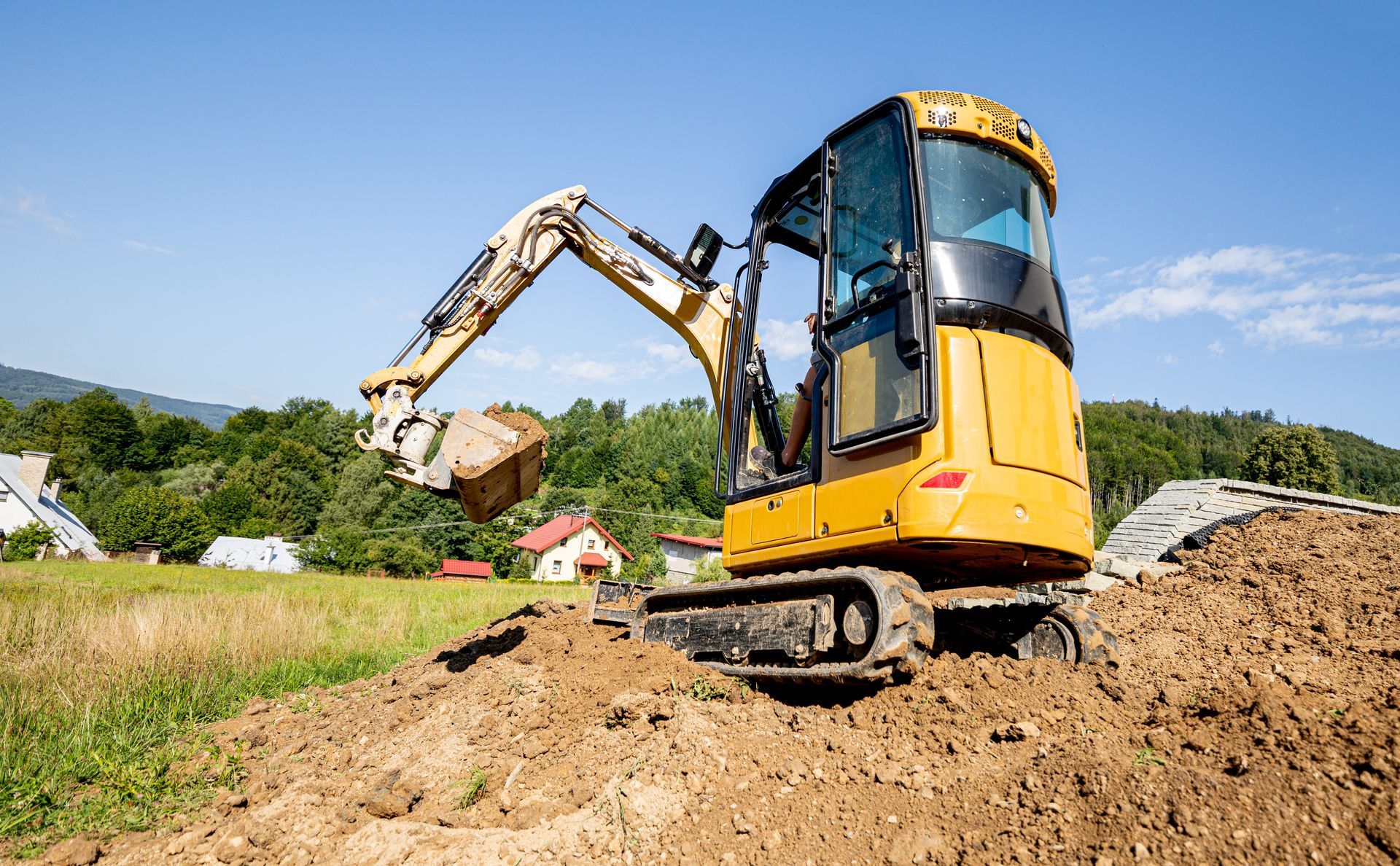Inland Marine Insurance For Contractors

See How We're Different:
or call us:619-719-5818
Top 3 Recommended Policies
Index
Understanding Inland Marine Insurance
Who Needs Inland Marine Insurance?
Types of Inland Marine Insurance for Contractors
Coverage and Exclusions of Inland Marine Insurance
Pricing and Purchasing Inland Marine Insurance
Claims and Disputes in Inland Marine Insurance
Contact Us
Phone
Location
Inland Marine Insurance is a specialized type of coverage that provides protection for contractors engaged in diverse projects involving transportation, equipment, and valuable goods. This ultimate guide is designed to explore the intricacies of Inland Marine Insurance specifically for contractors, offering insights into definitions, coverage, pricing, and claims. Understanding this insurance is crucial for contractors who want to safeguard their business investments.
Understanding Inland Marine Insurance
Definition and Importance of Inland Marine Insurance
Inland Marine Insurance originated from ocean marine insurance, designed to cover goods transported over water. Today, it serves to protect various property types that are often in transit, at job sites, or away from the main business location. This type of insurance is vital for contractors who transport equipment and materials to and from sites. It provides peace of mind, knowing that valuable assets are safeguarded against unforeseen circumstances that could disrupt operations.
The importance of Inland Marine Insurance is underscored by its ability to cover losses that standard commercial property policies may not address. For contractors, this means financial security in the face of unexpected theft, damage, or loss, ensuring that ongoing projects can continue without crippling financial setbacks. Moreover, as the construction industry evolves with more complex projects and increased mobility, the relevance of this insurance becomes even more pronounced, allowing businesses to adapt to changing environments and demands.
Key Features of Inland Marine Insurance
Inland Marine Insurance offers several key features that make it attractive to contractors. First, it typically allows for flexible coverage amounts tailored to specific needs and values of the equipment and materials being used. Additionally, it often covers equipment, materials, and other property while in transit or at job sites, which is crucial for construction and contracting professionals. This adaptability ensures that contractors can secure the right level of protection without overextending their budgets.
Another significant feature is the ease of transferring coverage from one job site to another, enabling contractors to work across various locations without losing protection. This flexibility is particularly beneficial for contractors engaged in multiple projects simultaneously. Furthermore, many policies include provisions for specialized equipment, such as cranes or scaffolding, which may require unique considerations. As contractors face the challenges of modern construction, including tight deadlines and fluctuating project scopes, Inland Marine Insurance stands out as a critical component of a comprehensive risk management strategy, allowing them to focus on delivering quality work while minimizing potential disruptions.
Who Needs Inland Marine Insurance?
Specific Contractor Professions That Require Inland Marine Insurance
Several contractor professions particularly benefit from Inland Marine Insurance. General contractors often require coverage for tools, materials, and equipment, especially when they are transported between job sites. Specialty contractors, such as electricians and plumbers, also need this insurance to protect high-value tools and equipment essential for their work. These professionals rely on a variety of specialized tools, from power drills to intricate plumbing devices, which can be quite costly to replace if lost or damaged.
Moreover, landscaping contractors and HVAC technicians frequently work with expensive and portable equipment that may be exposed to theft or damage. In these cases, Inland Marine Insurance becomes a crucial resource for safeguarding their investments. For instance, a landscaping contractor might use high-end mowers and trimmers that are not only vital for their daily operations but also represent a significant financial investment. Similarly, HVAC technicians often carry expensive diagnostic equipment that is essential for their trade. Protecting these assets with Inland Marine Insurance ensures that they can continue to operate smoothly, even in the face of unforeseen circumstances.
Assessing Your Need for Inland Marine Insurance
Determining the need for Inland Marine Insurance involves evaluating various factors such as the nature of work, equipment value, and the frequency of transportation. Contractors should conduct a thorough assessment of the tools and equipment they use, as well as potential risks associated with their transportation and storage. This evaluation might include creating an inventory list of all tools and equipment, noting their values, and identifying which items are most at risk during transit.
Additionally, contractors should consider their project locations and the likelihood of theft or damage. If a contractor frequently relocates their equipment or works in high-risk areas, investing in Inland Marine Insurance becomes a practical necessity to mitigate potential losses. Furthermore, understanding the specific terms and coverage options available can help contractors tailor their policies to fit their unique needs. For example, some policies may offer coverage for
equipment breakdowns or provide rental reimbursement in case of a loss, which can be invaluable for maintaining business continuity in the event of an incident.

Types of Inland Marine Insurance for Contractors
Builders Risk Insurance
Builders Risk Insurance is specifically designed to cover buildings under construction, renovation, or repair. It protects against losses due to fire, theft, vandalism, and certain other risks, making it essential for contractors involved in new construction projects.
This type of coverage is typically purchased for the duration of the construction project and can cover not only the structure being built but also the materials and equipment on-site. A comprehensive Builders Risk policy is crucial for ensuring financial stability during the project timeline. Additionally, it may also cover soft costs such as lost income due to project delays, which can be a significant concern for contractors. Understanding the specific terms and exclusions of a Builders Risk policy is vital, as it can vary widely between insurers, and ensuring that all potential risks are addressed can save contractors from unexpected financial burdens.
Installation Floater
The Installation Floater provides coverage for materials and equipment while they are being installed at a job site. This insurance is critical for contractors involved in installing equipment, machinery, or other integral components in construction projects.
It ensures that if any covered property is damaged or lost during the installation process, the contractor remains financially protected. This type of coverage caters specifically to the unique risks that ensue when items are in the process of being incorporated into a larger project. Moreover, the Installation Floater can also extend to cover items in transit to the job site, offering a broader safety net for contractors. This is particularly important in projects where specialized equipment is needed, as the costs associated with replacing or repairing such items can be substantial and could potentially derail project timelines.
Contractors Equipment Insurance
Contractors Equipment Insurance covers tools and heavy machinery owned by contractors. This policy safeguards against loss due to theft, damage, or accidents that can occur while the equipment is in use or being transported.
Contractors equipment is often expensive and can be vulnerable to various risks. Therefore, having this insurance not only protects the investment but also ensures that projects run smoothly without interruptions due to equipment-related issues. Furthermore, many policies can be tailored to include coverage for rented or leased equipment, which is increasingly common in the industry. This flexibility allows contractors to adapt to changing project needs without the fear of incurring significant out-of-pocket expenses for equipment losses. Understanding the nuances of Contractors Equipment Insurance can empower contractors to make informed decisions regarding their coverage needs and risk management strategies.
Coverage and Exclusions of Inland Marine Insurance
What Does Inland Marine Insurance Cover?
Inland Marine Insurance generally covers a broad range of items, including equipment, tools, materials, and goods while they are in transit or located at job sites. It can also cover damages caused by various risks, including theft, fire, and certain natural disasters. This flexibility allows contractors to ensure their assets are protected where they are most utilized.
Additionally, many policies can be tailored to include specific coverages based on the contractor’s operations, making it a versatile option for professionals in the trade. For instance, specialized coverage can be added for high-value equipment or unique tools that are critical to a contractor's work. This adaptability not only helps in managing risk but also provides peace of mind, knowing that the policy can evolve alongside the business's needs. Furthermore, some insurers offer coverage for rented or leased equipment, which can be particularly beneficial for contractors who frequently utilize third-party tools and machinery.
Common Exclusions in Inland Marine Insurance
While Inland Marine Insurance provides extensive coverage, it also has exclusions that contractors should be aware of. Common exclusions may include inherent vice, which refers to damage due to the characteristics of the item itself, such as decay or deterioration. Additionally, policies may exclude coverage for losses due to intentional acts or negligence. This means that if a contractor fails to secure their equipment properly or if damage occurs during improper use, the insurance may not cover the resulting losses.
Contractors should read policy details carefully to understand these exclusions and identify if they need additional coverage to fill any gaps. Awareness of what is not covered allows contractors to make informed decisions to secure their investments fully. Moreover, some policies may also exclude coverage for items that are not specifically listed, such as personal belongings or equipment not used in the course of business. This highlights the importance of maintaining an updated inventory of covered items and regularly reviewing the policy to ensure comprehensive protection. By doing so, contractors can mitigate risks and avoid unexpected financial burdens in the event of a loss.
Pricing and Purchasing Inland Marine Insurance
Factors Influencing the Cost of Inland Marine Insurance
The cost of Inland Marine Insurance can vary based on several factors including the type of equipment or property being insured, its value, the frequency of transportation, and the overall risk associated with the contractor’s operations. Premiums are also influenced by the contractor’s loss history and any additional coverages selected. For example, specialized equipment such as cranes or heavy machinery may incur higher premiums due to their value and the risks involved in their operation. Similarly, if a contractor frequently transports goods over long distances, the likelihood of damage or loss increases, which can also affect the cost of coverage.
Contractors should assess all these variables to find suitable coverage options that align with their operational needs and budget constraints. Additionally, the geographical area where the contractor operates can play a significant role in pricing. Areas prone to natural disasters or theft may lead to higher insurance costs. Consulting with an insurance broker can provide insights into affordable yet comprehensive policies. Brokers can also help identify potential discounts, such as bundling policies or implementing safety measures that could mitigate risks and, in turn, lower premiums.
Steps to Purchase Inland Marine Insurance
Purchasing Inland Marine Insurance requires a systematic approach. First, contractors should evaluate their coverage needs by conducting a thorough inventory of tools and equipment. This inventory should not only include the current assets but also consider any future acquisitions that may require coverage. Next, they should research and compare insurance providers to identify those specializing in Inland Marine Insurance. It is advisable to look for providers with a strong reputation in the industry and positive customer reviews, as this can indicate reliability and quality service.
After selecting potential providers, it is beneficial to request quotes and discuss tailored coverage options. During this phase, contractors should inquire about the specifics of each policy, including limits, deductibles, and any endorsements that may enhance their coverage. Lastly, reviewing the policy details and exclusions meticulously before finalizing the purchase is essential to ensure a clear understanding of what is covered. Upon agreement, contractors can secure their Inland Marine Insurance effectively, ensuring peace of mind as they undertake their projects. This diligence not only protects their investments but also supports their business continuity in the face of unforeseen events, allowing them to focus on growth and success in their operations.

Claims and Disputes in Inland Marine Insurance
Filing a Claim for Inland Marine Insurance
Filing a claim for Inland Marine Insurance typically involves notifying the insurance provider as soon as a loss occurs. Contractors should document the incident thoroughly, including taking photographs and gathering witness statements if applicable. This documentation is crucial for substantiating the claim.
After the necessary information is compiled, contractors should fill out the claim form provided by the insurance company. Timely submission of claims helps expedite the process, allowing contractors to recover financially and continue their work with minimal disruption.
Handling Disputes in Inland Marine Insurance
Disputes related to claims in Inland Marine Insurance can be challenging. If a contractor disagrees with the insurance company’s decision on a claim, the first step is to review the policy terms closely to understand the basis of the insurer's decision. Clear communication with the insurance adjuster can sometimes clarify misunderstandings.
If disputes persist, contractors may need to consider mediation or arbitration as a resolution method. Consulting with an insurance attorney could also provide guidance on how to navigate complex claims and disputes effectively.
Frequently Asked Questions about Inland Marine Insurance
Answers to Common Queries about Inland Marine Insurance
Contractors often have various questions about Inland Marine Insurance. One common query is whether it covers just tools and equipment. While it predominantly covers these items, it can also extend to materials and goods in transit, providing a comprehensive safety net against diverse risks.
Another frequent question concerns the need for this type of insurance. Contractors should consider their business model, the nature of their work, and the risks associated with transportation to assess if Inland Marine Insurance is necessary for their specific circumstances.
Myths and Misconceptions about Inland Marine Insurance
There are several myths surrounding Inland Marine Insurance that can mislead contractors. One prevalent myth is that it is unnecessary if a business already has a standard commercial property policy. The reality is that Inland Marine Insurance offers distinct coverage that standard policies often do not, particularly for property in transit.
Another misconception is that Inland Marine Insurance is excessively expensive. While costs can vary based on several factors, many contractors find that having this insurance saves them from much higher financial losses in the event of theft or damage. Understanding these myths helps contractors make better-informed decisions about their insurance needs.
Conclusion: Making the Most of Your Inland Marine Insurance
Key Takeaways on Inland Marine Insurance for Contractors
Inland Marine Insurance is an invaluable asset for contractors, providing essential coverage for equipment, materials, and tools during transit and at job sites. Understanding this insurance allows contractors to protect their investments against unforeseen events, thus enabling business continuity.
Identifying the specific type of Inland Marine Insurance required, from Builders Risk Insurance to Contractors Equipment Insurance, and recognizing the factors influencing pricing can aid contractors in making well-informed decisions tailored to their unique situations.
Final Thoughts on Maximizing Your Inland Marine Insurance
Maximizing Inland Marine Insurance involves understanding its coverage thoroughly, filing claims properly, and addressing any disputes effectively. Contractors should consistently evaluate their insurance needs and engage with providers to ensure they have adequate protection as their business evolves. By following these guidelines, contractors can navigate the complexities of Inland Marine Insurance with confidence and resilience.
